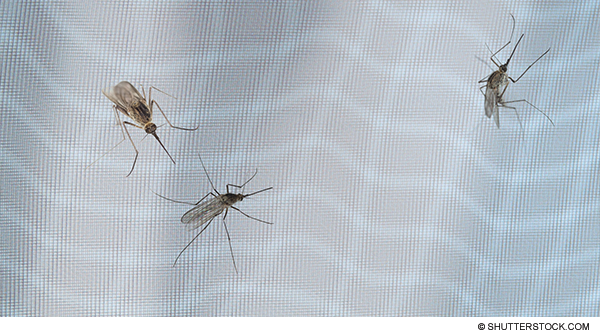
Eighty percent of infections were reported in individuals 18–64 years of age, 15 percent in those younger than age 18, and 5 percent in those age 65 or older. At the time of malaria acquisition among the pediatric subjects, 51 percent were U.S. civilians, 34 percent had foreign-resident status, and 16 percent had unknown resident status. Of the U.S. civilian children, 6 percent were younger than 24 months, 18 percent were 2–4 years, 42 percent were 5–12 years, and 34 percent were 13–17 years of age. A majority of the infections in these patients were attributed to travel to Africa for the purpose of visiting friends or relatives. Of the children with known chemoprophylaxis information, 49 percent reported having taken some type of malaria chemoprophylaxis. However, only 50 percent of these patients took the appropriate regimen, and the majority (60 percent) reported nonadherence to the recommended chemoprophylaxis regimen.
Explore This Issue
ACEP Now: Vol 33 – No 02 – February 2014Thirty-seven cases of malaria were reported among pregnant women, of whom 30 percent were considered severe infections. In the absence of fulfilling the specific clinical criteria for severe infection, patients who were treated with artesunate, quinidine, or an exchange blood transfusion were also considered as having severe infections. Of note, exchange blood transfusion for the treatment of severe malaria is no longer recommended.4 Most (79 percent) infections in pregnant women were due to P. falciparum, followed by P. vivax (18 percent).
Among the 1,596 cases for which the disposition information was available, 1,047 (66 percent) were hospitalized. The majority (61 percent) of admissions were due to P. falciparum, followed by P. vivax (18 percent) infections.
Of the 1,920 cases of imported malaria, 1,645 (86 percent) were categorized as uncomplicated infections. Most of these patients (72 percent) were treated appropriately, according to the CDC guidelines, when treatment information was available; however, almost 30 percent received inappropriate treatment. There was a noteworthy decrease in patients with uncomplicated disease being treated appropriately compared to the previous year (72 percent in 2011 versus 87 percent in 2010).
Fourteen percent of all cases were classified as severe malaria, with almost 75 percent due to P. falciparum. Five patients died. In comparison to the previous year, there was a significant increase in the number of severe cases (14 percent in 2011 versus 11 percent in 2010). A majority of the infections (84 percent) occurred in patients older than age 17. Among children, those younger than age 5 were more likely to have severe disease than those who were older. There was no association found between severe disease and age greater than 64 years. Of those with known prophylaxis information, 26 percent reported taking a recommended malaria chemoprophylaxis; however, only 23 percent reported compliance with the suggested regimen. Most patients experienced severe anemia (19 percent) or renal failure (16 percent). With respect to the treatment, inappropriate treatment was more commonly observed in patients with severe disease than in those with uncomplicated infections.
Pages: 1 2 3 4 5 | Single Page




One Response to “CDC Reports Record Number of Malaria Cases in the U.S”
August 6, 2019
Paul E. KuneliusI was discharged from the Army on 08/23/1967. I served in Vietnam from Sept. of 1966 to August of 1967. In the month of Feb. 1969 I came down with malaria and was treated at the VA and was in the hospital for one week. I live in Massachusetts and have for my whole life. My questions are was it possible to contact malaria in MA at that time and is it possible to have contacted malaria in Vietnam and have it not appear till 16 months later? I never had malaria in Vietnam. Thank You, Paul